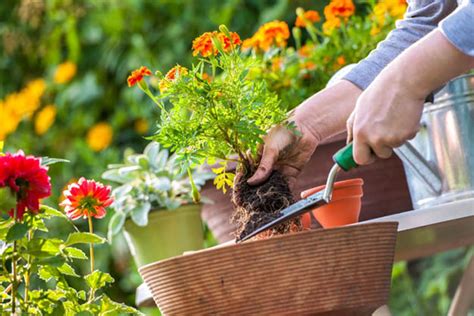Top 5 Balcony Gardening Mistakes and How to Avoid Them
Balcony gardening is a fantastic way to bring greenery into urban living spaces. However, many gardeners, especially beginners, face challenges that lead to less-than-optimal results. To help you on your journey toward successful balcony gardening, we’ll dive into the most common gardening mistakes and how to troubleshoot them for thriving plants.
1. Underestimating Sunlight Requirements
One of the most common errors in balcony gardening is misunderstanding your plants’ sunlight needs. Some plants need full sun, while others thrive in partial or even full shade. Unfortunately, many gardeners overlook this, leading to poor plant health.
Key Concepts
- Full Sun: 6-8 hours of direct sunlight daily.
- Partial Sun: 3-6 hours of sunlight.
- Shade: Less than 3 hours of sunlight.
Solution: Observe the sunlight pattern on your balcony throughout the day. Choose plants that match the light conditions, or consider using reflective materials to increase available light for your plants.
Examples of Sunlight Preferences
| Plant Type | Sunlight Requirement |
|---|---|
| Tomatoes | Full Sun |
| Lettuce | Partial Sun |
| Ferns | Shade |
2. Overcrowding the Balcony Space
In their excitement, many gardeners cram too many plants into a small balcony. This common mistake can lead to competition for sunlight, water, and nutrients, resulting in stunted plant growth.
Current State Analysis
Balcony gardening often requires optimizing limited space. Overcrowding negatively affects plant health and makes it difficult for air to circulate, which can encourage pests and disease.
Solution: Space your plants appropriately based on their mature size. Use vertical gardening techniques or hanging baskets to maximize space without overcrowding.
Spacing Guidelines
| Plant Type | Recommended Spacing |
|---|---|
| Herbs (e.g., Basil) | 6-8 inches apart |
| Tomatoes | 24-36 inches apart |
| Leafy Greens (e.g., Spinach) | 8-12 inches apart |
3. Neglecting Proper Drainage
Inadequate drainage is a frequent issue in urban gardening, particularly on balconies. Without proper drainage, excess water can accumulate, leading to root rot and other plant health problems.
Practical Applications
Proper drainage is essential for keeping the soil from becoming waterlogged. When plants sit in water for extended periods, their roots can suffocate, leading to decay and the eventual death of the plant.
Solution: Ensure your containers have drainage holes. Place a saucer underneath to catch excess water and prevent spills. Use well-draining soil, and consider adding perlite or small stones to improve drainage.
Drainage Tips
- Use pots with multiple drainage holes.
- Elevate pots slightly to allow water to flow freely.
- Avoid using saucers for plants sensitive to waterlogged soil.
4. Choosing the Wrong Soil
Many novice gardeners assume that any soil will do, but balcony plants require special attention when it comes to soil composition. Using garden soil from the ground is a common error that can hinder plant growth.
Stakeholder Analysis
Plants grown on balconies are dependent on the quality of the potting mix used. Regular garden soil is often too dense and lacks the necessary nutrients to support healthy plants in containers.
Solution: Use a high-quality potting mix designed for container gardening. These mixes are lighter, drain better, and often contain slow-release fertilizers that provide ongoing nutrition for your plants.
Potting Mix Recommendations
| Soil Type | Best For |
|---|---|
| All-Purpose Potting Mix | Herbs, Leafy Greens |
| Cactus/Succulent Mix | Cacti, Succulents |
| Compost-Enriched Mix | Fruit and Vegetables |
5. Ignoring Pest Prevention and Plant Diseases
Pests and diseases can quickly ruin a thriving balcony garden if left unchecked. However, many gardeners fail to notice early signs of trouble until it’s too late. This gardening mistake is one that even experienced gardeners face.
Clarity & Readability Expert Commentary
Plant pests like aphids and diseases like powdery mildew are not just problems for traditional gardens—they’re a significant issue in balcony gardening as well. Urban areas often lack the natural predators found in more rural settings, making pest control a priority.
Solution: Regularly inspect plants for signs of pests and disease. Use organic pest control methods like neem oil, insecticidal soap, or companion planting to ward off infestations before they get out of hand.
Common Balcony Pests and Solutions
| Pest | Plant Affected | Solution |
|---|---|---|
| Aphids | Leafy Greens, Flowers | Neem Oil, Insecticidal Soap |
| Spider Mites | Tomatoes, Herbs | Strong Water Spray, Neem Oil |
| Whiteflies | Herbs, Vegetables | Companion Planting (e.g., Marigolds) |
Limitations and Future Research
Balcony gardening presents unique challenges, from space constraints to sunlight access. Although we’ve highlighted the common mistakes and their solutions, future research could focus on developing innovative balcony-specific gardening tools and techniques. For instance, experimenting with new vertical gardening technologies or water-saving irrigation systems could greatly improve the balcony gardening experience.
Expert Commentary
Balcony gardening can be a rewarding endeavor, but only if approached with the right knowledge and techniques. By avoiding the common gardening errors discussed in this article, you can create a lush, thriving urban garden. Remember, it’s about understanding the specific needs of your plants and taking proactive steps to ensure their health and longevity.


